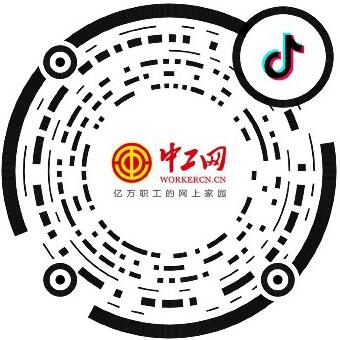Original title: The story of the central axis in the mottled royal road of Yongding Gate
He Yanwei
In the Regulations on the Protection of Historical and Cultural Heritage along the Central Axis of Beijing passed in May 2022, there is an overall protected object that needs people to lean over to take a closer look. This is the "Yongdingmen Imperial Road Relic".
What is the Royal Road? Generally speaking, it is a road dedicated to the emperor. The earliest imperial roads appeared in the Han Dynasty. Since then, many imperial roads have been built in all dynasties. However, due to the lack of historical data, it is difficult for us to understand its specific situation. After the capital of Beijing was established in the Qing Dynasty, due to the various activities of the emperor such as patrolling, hunting and sacrifice, a special road system with the Forbidden City as the center and radiating everywhere was formed. At the same time, a lot of data about imperial roads were left for study. Among these numerous and varied imperial roads with different functions, there is a special position. Even the emperor can't sit in a sedan chair on this road, but can only walk. This is the way to worship heaven from the Forbidden City to the Temple of Heaven.
The system of offering sacrifices to heaven in ancient Chinese dynasties originated from the Zhou Dynasty, while the Temple of Heaven in the Ming and Qing Dynasties, which we are familiar with, originated from Zhu Yuanzhang, the founding emperor of the Ming Dynasty. In the second year of Hongwu, Li Shanchang went to Zhu Yuanzhang to discuss the Suburb Sacrifice: "The king should observe the sky and the ground, so the winter solstice should report the sky and the summer solstice should report the land, so it is also the righteousness of following the yin and yang. Sacrifice to the heaven is in the round hill in the southern suburbs, and sacrifice to the land is in the square river in the northern suburbs, so it is also the place of following the yin and yang." According to Li Shanchang's suggestion, Zhu Yuanzhang built a round hill to worship the sky in the south of Zhongshan Mountain, and a square hill to worship the north of Zhongshan Mountain. From then on to the 10th year of Hongwu, Zhu Yuanzhang offered sacrifices to heaven 9 times at the Round Hill and 3 times at the Square Hill. In the eighth month of the lunar calendar in the tenth year of Hongwu, Zhu Yuanzhang put forward: "The people of Coyett are not at ease in offering sacrifices to heaven and earth separately, so they want to hold a ceremony of joint sacrifice. It is destined that the former site of the Round Hill is used as an altar and the houses are used to cover it." So a series of suburban temple buildings were built here to implement the joint sacrifice of heaven and earth. From then on to the 15th year of Yongle, the emperors of the Ming Dynasty sacrificed here to heaven and earth.
After Zhu Di moved to Beijing, he imitated the old system of the Temple of Heaven and Earth in Nanjing and established the Temple of Heaven and Earth in the southern suburbs of Beijing in the 18th year of Yongle. At that time, the emperor and Houtu jointly offered sacrifices, and the emperor held sacrifices in the Grand Sacrifice Hall. About a hundred years later, in the tenth year of Jiajing, Zhu Hougui divided the emperor's heaven and the earth, and the Temple of Heaven and Earth was changed into the Temple of Heaven, which became a special place for worshipping heaven. Since then, nearly 400 years later, more than a dozen emperors of the Ming and Qing dynasties have walked through the imperial road hundreds of times to the Temple of Heaven.
According to the Qing Dynasty documents, the emperor's accompanying specifications for offering sacrifices to the heaven were the big pot stew books. The so-called "Dajia Biten Book" is a guard of honor system with the largest number of travelers. Its components can be specifically divided into chariots and various vehicles, guards of honor, guards of horses, statues, etc. In front of the Dajia Bittern Book is an image, followed by a guiding staff, imperial staff, various appliances, various banners and other things, followed by the emperor's jade chariot (the jade chariot is dedicated to the "Dajia Bittern Book", which is the highest specification in the "two chariots and three chariots" used by the emperor). Around the jade chariot, there are officials such as Luan Yi Envoy, Champion Envoy, Yun Hui Envoy, Zhiyi Zheng, and Zhiyi Wei. There is a yellow canopy in front of the jade chariot and ten ministers with swords. After the jade chariot, there are two imperial ministers, and then there are the leader's bodyguard ministers, bodyguard teams, Zongrenfu, scattered officials, former army commanders, and escort commanders. At last, the minister in charge of the bodyguard led a group of troops to hold the Yellow Dragon Flag.
It is particularly noteworthy that when the emperor went to the Temple of Heaven, the Emperor drove along the imperial road. Although there was a jade chariot to ride, he could only walk out of awe of heaven. It took about an hour for the emperor to walk to the Temple of Heaven. In the Qing Dynasty, the worship was held at the winter solstice. At this time, the weather in Beijing was very cold. However, to show his reverence for the emperor, the emperor had to do it reluctantly.
This royal road is not only the only way for the emperor to go from the Forbidden City to the Temple of Heaven to hold the ceremony of offering sacrifices to heaven, but also an extension of the space for the ceremony of offering sacrifices. It is not just a road. Only when the emperor arrives at the sacrificial place by walking through the imperial road can the integrity of the sacrificial ceremony be fully reflected, so as to achieve effective communication between himself and the heaven and achieve the ultimate purpose of sacrificing to the heaven.
Since the Temple of Heaven became a special place of worship in Jiajing, the imperial road from the imperial palace to the Temple of Heaven has always been an earthen road. In the early years of Yongzheng period, this earth road was paved with granite blocks and replaced with slate road, which has been used for more than 100 years. At the end of the Qing Dynasty, the tram track from Zhengyangmen to Yongdingmen was built. For the convenience of laying the rail, the imperial road was reconstructed into auxiliary roads on both sides of the rail. After the Republic of China, this imperial road gradually sank into the ground with the historical changes.
What is the way of offering sacrifices to heaven? An archaeological excavation in 2004 revealed its true appearance. Archaeologists found the remains of the imperial road in the north of Yongdingmen Gate, 108 meters from the east side of the road and 140 meters from the west side of the road, all of which were built with granite strips and stones, and the lower part was rammed with three kinds of earth. This is what we call today the "Yongdingmen Imperial Road Remains", which is part of the Imperial Road from Zhengyangmen to Yongdingmen. However, this section of the imperial road is in the south of the Temple of Heaven, and most of the emperors are here to get in and out of Yongding Gate, so it is not necessary to walk through this section of the imperial road.
In early September 2019, the restoration project of Yongdingmen Royal Road was completed. The restored imperial road is made of bluish white stone as the main material, about 9 meters wide, slightly raised in the center, in an arch shape, and the roads on both sides are manually chiseled with dents. In 2021, the Yongdingmen Imperial Road remains were officially listed in the ninth batch of cultural relics protection units in Beijing.
The overall protection object of the Regulations on the Protection of Historical and Cultural Heritage along the Central Axis of Beijing passed on May 25, 2022 is clearly listed as the "Yongdingmen Imperial Road Remains". This fully shows that the remains of the Yongdingmen Imperial Road are part of the central axis of Beijing and play an important role in the protection of the historical and cultural heritage of the central axis.
The launch of the application for the World Heritage of the Central Axis and the recent promulgation of the Regulations on the Protection of the Historical and Cultural Heritage of the Central Axis in Beijing have made the road of worship to heaven used by the former royal emperors regain its unique luster after a hundred years of silence.
Today, the imperial road remains are located in Yongdingmen Park, surrounded by green trees and lawns. After entering the park from the north gate of the park, visitors can see a pedestrian path with bluestone slabs in the middle and grey bricks on both sides. The designer carefully kept the style of ground pavement and rest facilities consistent with the Temple of Heaven wall, as if inadvertently reflecting the special relationship between the Imperial Way and the Temple of Heaven.
In those days, the Sacrifice to Heaven was not only a channel connecting the earth and heaven, but also a symbol of the supremacy of imperial power. Emperors of past dynasties took this opportunity to show their reverence for heaven. The remains of the imperial road that are now displayed in front of the vast number of tourists are the marks of history, telling the story of the central axis in a mottled way.
(Author's unit: History Institute of Beijing Academy of Social Sciences)














